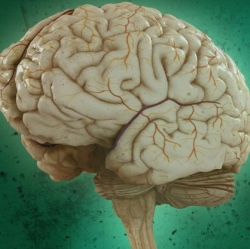
Researchers have found a way to produce realistic sensations of touch in two human amputees by directly stimulating the nervous system. The work, which was published recently in the journal Science Translational Medicine, backs up earlier research on how the nervous system encodes the intensity, or magnitude, of sensations.
It is the second of two groundbreaking publications this month by University of Chicago neuroscientist Sliman Bensmaia, PhD, using neuroprosthetic devices to recreate the sense of touch for amputee or quadriplegic patients with a “biomimetic” approach that approximates the natural, intact nervous system.
Also in a separate publication from STM, Bensmaia and a team led by Robert Gaunt, PhD, from the University of Pittsburgh, announced that for the first time, a paralyzed human patient was able to experience the sense of touch through a robotic arm that he controls with his brain.
In that study, the researchers interfaced directly with the patient’s brain, through an electrode array implanted in the areas of the brain responsible for hand movements and for touch, which allowed the man to both move the robotic arm and feel objects through it. This work was done to understand how an uninjured hand’s nervous system communicates and encodes information during tasks.
With such knowledge, the research teams were able to fill in the gaps in the process for patients with amputations, and help them feel the sensation of touch through a surrogate bionic prosthetic.
Working with two male subjects who each lost an arm after traumatic injuries, both subjects were implanted with neural interfaces in their arms. The electrodes were embedded to the median, ulnar and radial nerves of the arm. Those are the same nerves that would carry signals from the hand were it still intact.
“If you want to create a dexterous hand for use in an amputee or a quadriplegic patient, you need to not only be able to move it, but have sensory feedback from it,” said Bensmaia, who is an associate professor of organismal biology and anatomy at the University of Chicago. “To do this, we first need to look at how the intact hand and the intact nervous system encodes this information, and then, to the extent that we can, try to mimic that in a neuroprosthesis.”
Results from the new study verified the teams overall hypothesis: A single feature of electrical stimulation, dubbed the activation charge rate, was found to determine the strength of the sensation. By changing the activation charge rate, the team could change sensory magnitude in a highly predictable way. The team then showed that the activation charge rate was also closely related to the evoked population spike rate.
